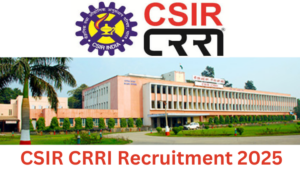Q1. Kelvin is the unit of
(a) length
(b) temperature
(c) time
(d) mass
(e) None of the above
Q2. The suitable conditions in which the rate of evaporation occurs more fastly are
(a) Low speed of wind
(b) High humidity
(c) Low humidity and high temperature
(d) Excess amount of water in the soil
(e) None of the above
Q3. Railway tracks are banked on curves so that
(a) necessary centrifugal force may be obtained from the vertical component of the weight of the train
(b) no frictional force may be produced between the tracks and the wheels
(c) necessary centripetal force may be obtained from the horizontal component of the weight of the train
(d) the train may not fall collapse inward
(e) None of the above
Q4. Process by which plants prepare their food is
(a) Carbohydrolysis
(b) Metabolic synthesis
(c) Photosynthesis
(d) Photorespiration
(e) None of the above
Q5. In photosynthesis
(a) Light energy is converted into chemical energy
(b) Chemical energy is converted into light energy
(c) Chemical energy is converted into electrical energy
(d) Light energy is converted into mechanical energy
(e) None of the above
Q6. The main function of the Golgi body is
(a) respiration
(b) to begin cell division
(c) to produce gastric juice
(d) secretion
(e) None of the above
Q7. The torque produced by a force depends on
(a) The magnitude of the force
(b) The direction of the force
(c) The point of application of the force relative to origin
(d) All of the above
(e) None of the above
Q8. Which one among the following nutrients is a structural component of the cell wall of plants?
(a) Manganese
(b) Potassium
(c) Phosphorus
(d) Calcium
(e) None of the above
Q9. Flexibility in certain parts, like leaf and stem, can be attributed to the abundance of
(a) parenchyma
(b) collenchyma
(c) sclerenchyma
(d) xylem and phloem
(e) None of the above
Q10. In which one of the following antibody formations takes place?
(a) RBCs
(b) Blood Platelets
(c) Blood Plasma cells
(d) Donnan’s membrane
(e) None of the above
Solutions
S1.Ans. (b)
Sol. Kelvin is the SI unit of thermodynamic temperature, and one of the seven SI base units. The Kelvin scale is an absolute thermodynamic temperature scale, meaning it uses absolute zero as its null (zero) point.
S2.Ans. (c)
Sol. Low humidity and high temperature are the suitable conditions for increasing the rate of evaporation. While in conditions of at low speed of wind, excess amount of water and high humidity the water content will be less and slow process of evaporation will occur.
S3.Ans. (c)
Sol. Railway tracks are banked at the curves so that the necessary centripetal force may be obtained from the horizontal component of the reaction on the train. The outer track of the bend is slightly higher than the inner, this is known as banking of the rails or tracks, the following three kinds of force act on it:
the weight of the train acting vertically downwards,
the normal reaction provided by the track, acting upwards, to support the weight of the train, and
the frictional force acting between the contact area of wheels and the track surface helps the train move forwar(d)
S4.Ans. (c)
Sol. Photosynthesis is the process by which plants take up water from soil, CO2 from atmosphere, and absorbs photons from sunlight to synthesize sugars.Photorespiration is known as the oxidative photosynthetic carbon cycle, or C2 photosynthesis.
S5.Ans. (a)
Sol. In the process of photosynthesis the light energy or the solar energy is directly converted into chemical energy in the form of sugars or carbohydrates.
S6. Ans. (d)
Sol. The Golgi complex and rough ER work closely. When a protein is made in the ER, then transition vesicles are synthesize(d) These vesicles float through the cytoplasm to the Golgi apparatus and are absorbe(d) After the Golgi does its work on the molecules inside the sac or the vesicle a secretory vesicle is created and released into the cytoplasm. So the main function of the Golgi bodies is secretion.
S7.Ans. (d)
Sol. Torque is the cross product of force and perpendicular distance to an axis of rotation. The torque produced by a force depends on the magnitude of the force, the direction of the force, the point of application of the force relative to origin.
S8.Ans. (d)
Sol. Calcium activates enzymes, is a structural component of cell walls, influences water movement in cells and is necessary for cell growth and division. Potassium helps in energy flow, manganese is involved in enzyme synthesis and phosphorus makes up backbone of genetic materials like DNA and RN(A)
S9.Ans. (b)
Sol. Collenchymas provides malleability and flexibility to certain parts of the plants. Parenchyma is considered to be the soft tissue which makes most of the cell and sclerenchyma is the dead tissue which makes up fibre and provides rigidity to the cell.
S10.Ans. (c)
Sol. Blood plasma cells form 55 – 60% by volume of bloo(d) Antibodies and some other substances such as lysozyme and properdin always occur in the plasm(a) They serve to destroy bacteria, viruses and toxic substances that may enter into the blood from outside or from body tissues.



 GA Capsule for SBI Clerk Mains 2025, Dow...
GA Capsule for SBI Clerk Mains 2025, Dow...
 The Hindu Review October 2022: Download ...
The Hindu Review October 2022: Download ...
 Delhi CSIR CRRI Recruitment 2025 Notific...
Delhi CSIR CRRI Recruitment 2025 Notific...







